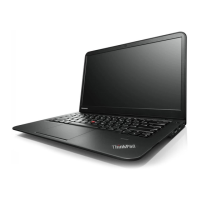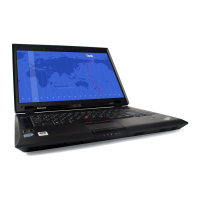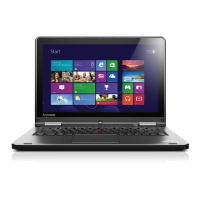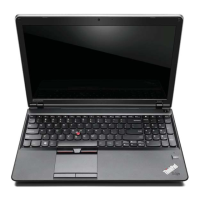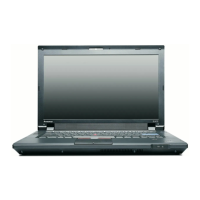Do you have a question about the Lenovo ThinkPad S431 and is the answer not in the manual?
Advice on avoiding discomfort or injury from computer heat, including hand placement and breaks.
Guidance on avoiding skin burns from the AC power adapter by keeping it away from the body.
Warning to keep liquids away from the computer to prevent spills and electrical shock.
Methods to prevent unauthorized use by setting passwords for the computer.
Steps to set and manage a power-on password for system access.
Details on setting user and master passwords for hard disk drive protection.
How to set and use a supervisor password to protect system configuration.
Information on protecting hard drives using encryption and security features.
How to configure the computer's embedded security chip for data protection.
Instructions for enrolling and using the fingerprint reader for secure access.
Guidance on using antivirus software to detect and eliminate viruses.
Information about recovery solutions for Windows 7.
Steps to create and use recovery media to restore the computer.
How to perform backup and recovery operations using Rescue and Recovery.
How to use the Rescue and Recovery workspace for system recovery.
Information about recovery solutions for Windows 8.
Steps to reset the computer to its original factory default settings.
Instructions for replacing the computer's storage drive.
Steps to replace or add a memory module to the computer.
Guide to starting and navigating the ThinkPad Setup utility for configuration.
Advice on maintaining the computer to avoid common issues.
Using Lenovo Solution Center for diagnosing and resolving computer issues.
General steps for solving problems indicated by messages or beep codes.
Steps to resolve issues when the computer becomes unresponsive.
Actions to take if liquid is spilled on the keyboard.
Explains common error messages and their solutions.
Troubleshooting steps for problems without specific error messages.
Interprets beep codes to identify hardware problems.
Troubleshooting steps for issues related to memory modules.
Common issues and solutions for Ethernet and wireless network connectivity.
Advice on avoiding discomfort or injury from computer heat, including hand placement and breaks.
Guidance on avoiding skin burns from the AC power adapter by keeping it away from the body.
Warning to keep liquids away from the computer to prevent spills and electrical shock.
Methods to prevent unauthorized use by setting passwords for the computer.
Steps to set and manage a power-on password for system access.
Details on setting user and master passwords for hard disk drive protection.
How to set and use a supervisor password to protect system configuration.
Information on protecting hard drives using encryption and security features.
How to configure the computer's embedded security chip for data protection.
Instructions for enrolling and using the fingerprint reader for secure access.
Guidance on using antivirus software to detect and eliminate viruses.
Information about recovery solutions for Windows 7.
Steps to create and use recovery media to restore the computer.
How to perform backup and recovery operations using Rescue and Recovery.
How to use the Rescue and Recovery workspace for system recovery.
Information about recovery solutions for Windows 8.
Steps to reset the computer to its original factory default settings.
Instructions for replacing the computer's storage drive.
Steps to replace or add a memory module to the computer.
Guide to starting and navigating the ThinkPad Setup utility for configuration.
Advice on maintaining the computer to avoid common issues.
Using Lenovo Solution Center for diagnosing and resolving computer issues.
General steps for solving problems indicated by messages or beep codes.
Steps to resolve issues when the computer becomes unresponsive.
Actions to take if liquid is spilled on the keyboard.
Explains common error messages and their solutions.
Troubleshooting steps for problems without specific error messages.
Interprets beep codes to identify hardware problems.
Troubleshooting steps for issues related to memory modules.
Common issues and solutions for Ethernet and wireless network connectivity.
| Graphics | Intel HD Graphics 4000 |
|---|---|
| Processor | Intel Core i3/i5/i7 (3rd Gen) |
| RAM | Up to 8GB DDR3 |
| Storage | 256 GB SSD |
| Display | 14 inches, 1366 x 768 |
| Operating System | Windows 8 Pro |
| Weight | 3.6 lbs |
| Battery | Up to 6 hours |
| Dimensions | 13.3 x 9.1 x 0.83 inches |
| Ports | USB 3.0, USB 2.0, HDMI, RJ-45, 4-in-1 card reader, headphone/microphone combo jack |
| Wireless | 802.11 a/b/g/n, Bluetooth 4.0 |

